The Americas hold secrets that puzzle even our most advanced scientific minds. From vanished colonies to mysterious earthworks spanning thousands of years, this continent harbors enigmas that challenge everything we think we know about ancient civilizations. Despite centuries of research and cutting-edge technology, these mysteries remain stubbornly unsolved, whispering tantalizing clues about forgotten peoples and lost knowledge.
Today, you’ll discover seven of the most baffling ancient American mysteries that continue to stump researchers. Each one offers a glimpse into sophisticated cultures whose achievements seem almost impossible given the technology of their time. Get ready to question what you thought you knew about the ancient past.
The Lost Colony of Roanoke: America’s First Disappearing Act
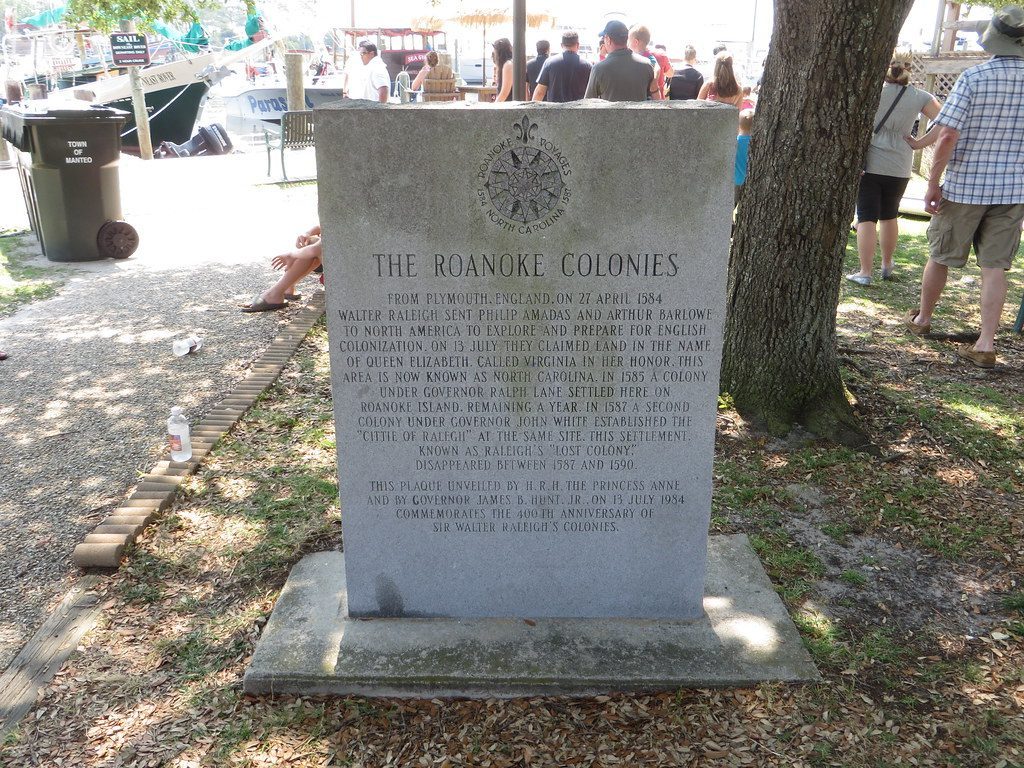
The origins of one of America’s oldest unsolved mysteries can be traced to August 1587, when a group of about 115 English settlers arrived on Roanoke Island, off the coast of what is now North Carolina. When he came back to Roanoke Island in August 1590, he found the settlement mysteriously abandoned – and all the colonists, including his daughter Eleanor Dare and his granddaughter Virginia Dare, gone.
The word CROATOAN and the letters CRO, carved into trees within the colony’s borders, were the only signs pointing to an explanation. Recent archaeological discoveries have uncovered possible clues to this enduring mystery. The colonists’ fate has become one of American history’s most enduring mysteries, and now archaeologists have uncovered new evidence suggesting that the survivors splintered into multiple camps and assimilated into the Indigenous population.
The Great Serpent Mound: A Giant Snake from the Past
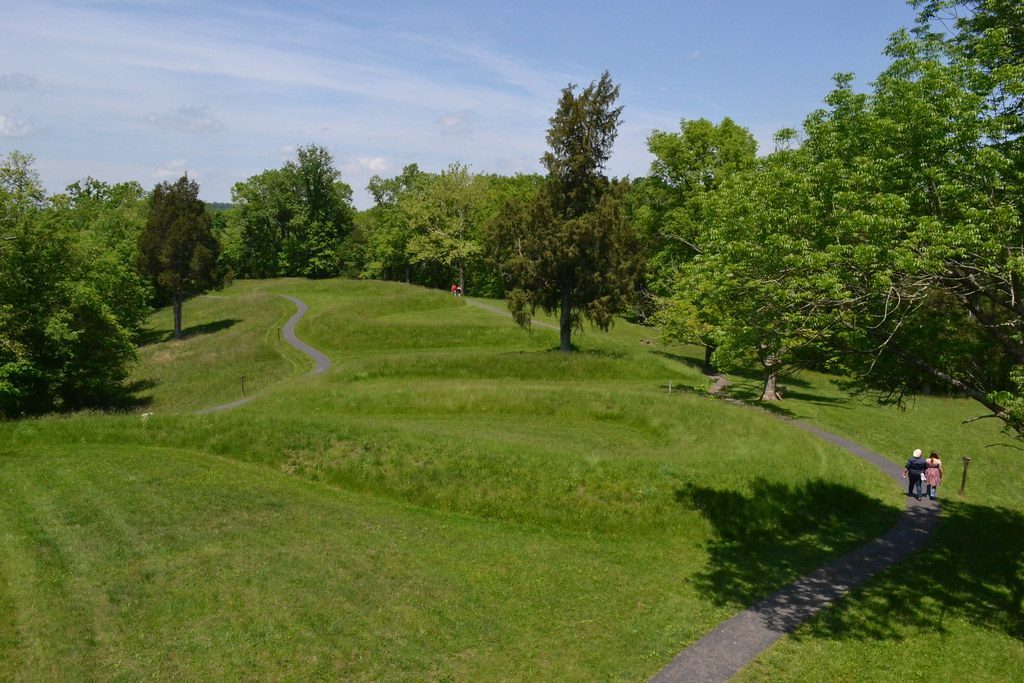
Great Serpent Mound, c. 1070, Adams County, Ohio (photo: Arthur T. LaBar, CC BY-NC 2.0) The Great Serpent Mound in rural, southwestern Ohio is the largest serpent effigy in the world. The Great Serpent Mound measures approximately 1,348 feet in length and ranges from one to three feet in height. This massive earthwork snakes across the landscape like a prehistoric puzzle.
Archaeologists have debated the origins of the serpent mound for many decades. Despite excavations, there have been no artifacts or burials found that have been directly able to help to identify when or why it was built. The head of the serpent aligns with the summer solstice sunset, and the tail points to the winter solstice sunrise. Could this mound have been used to mark time or seasons, perhaps indicating when to plant or harvest? Likewise, it has been suggested that the curves in the body of the snake parallel lunar phases, or alternatively align with the two solstices and two equinoxes.
Nazca Lines: Mysterious Drawings in the Desert
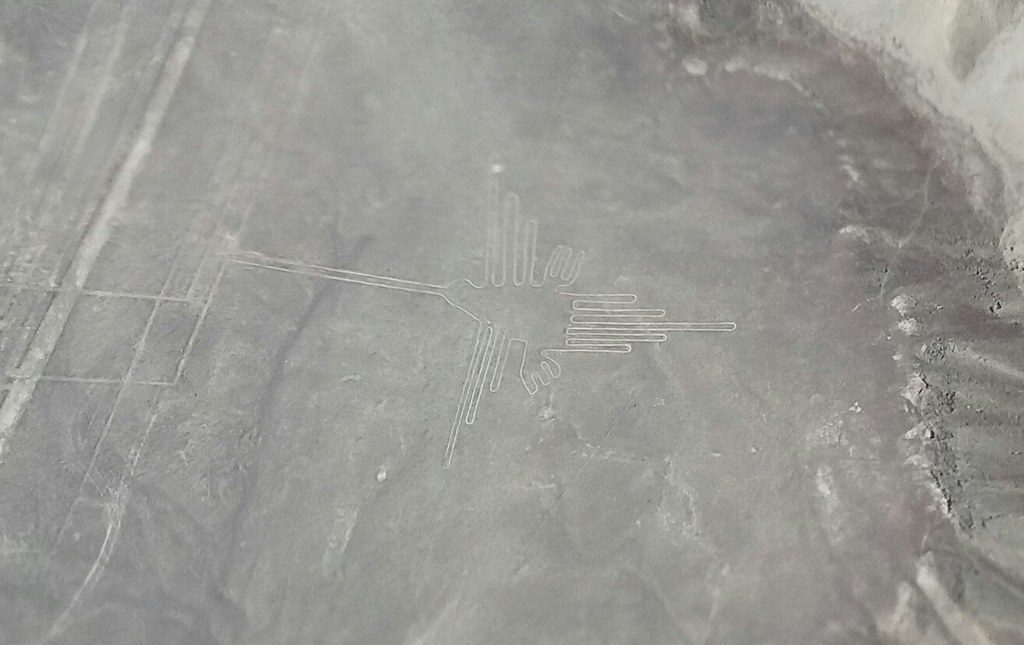
Between 500 BCE and 500 CE, the Nazca people of Peru carved 12 to 15 inches out of rust-colored rock, revealing the lighter-colored stone in deeper layers. The result was massive in-ground pictures of animals, plants, humans and geometric shapes that are best seen from an airplane. These enormous geoglyphs continue to baffle scientists who can’t agree on their purpose.
Some outlandish theories suggest the carvings point to aliens or ancient astronauts, but researchers can’t agree on some of the more realistic theories, either. Initial scholars suggested the Nazca Lines were connected to astronomy, while recent theories argue they were used for begging rain from the gods. When saying the Nazca lines are large, that is a slight understatement as some of the images measure 1,200 ft long.
Maine’s Mysterious Norse Penny: Viking Evidence in America
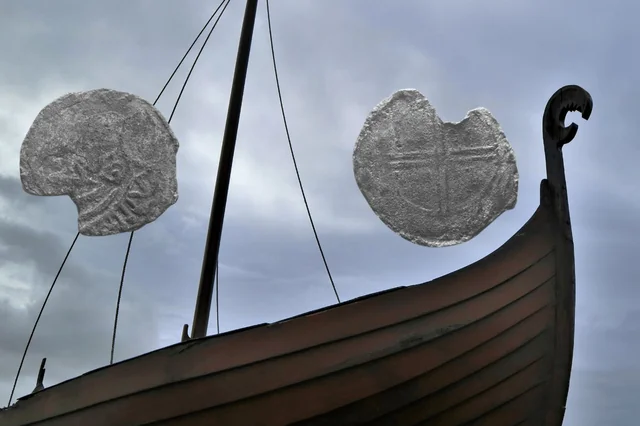
In 1957, a wannabe amateur archaeologist hiking through rural New England found a small coin at what was thought to be an ancient Native American site. But when the amateur sleuth turned the silver coin into a group of experts, everything we thought we knew about the New World was flipped on its head. After studying the coin in great detail, the experts realized it was an 11th-century Norwegian coin.
The issue is further complicated because the so-called “Maine penny” is the only 11th-century Norse coin ever found in America. With no other examples to speak of, scientists and skeptics alike wonder if it isn’t some kind of hoax. But it appears to have been altered in a way that may tell its true tale: A small mark on the silver coin indicates it was likely used as a pendant. Rather than functioning as currency, it could have been a one-off gift given by Norse visitors to new world natives.
The Enigmatic Berkeley Mystery Walls of California

Also known as the East Bay Walls, the Berkeley Mystery Walls are a series of stone walls running in a rough path through the Bay Area of California, from Berkeley to San Jose. Their purpose is unknown; they’re too low to be a defensive wall, there are gaps in the structures, and at one point they form ornamental spiral patterns.
It’s also unclear who made them. Early Spanish settlers found them already standing, and the local Ohlone people reported they’d always seen them there, too. Whenever they were built, it was long enough ago for sections of the stones to have sunk into the earth. A 1904 archaeologist suggested they were built by Mongolian sailors who’d come to the California coast well before the time of Columbus, but his theory seems to have been based more on wishful thinking than scholarship.
Cahokia: The Lost Metropolis of Ancient America

This mound-building society lived in the Ohio Valley and was influenced by the contemporary Mississippian culture (700–1550), whose urban center was located at Cahokia in Illinois. Cahokia reached its highest population around 1100 CE with about 15,000-20,000 people in the urban center, making it one of the largest cities in the world at that time. For comparison, it was not until the late 1700s that American cities like New York City and Philadelphia had more people than Cahokia.
The best-known flat-topped pyramidal structure is Monks Mound at Cahokia, near present-day Collinsville, Illinois. This mound appears to have been the main ceremonial and residential mound for the religious and political leaders; it is more than 100 feet (30 m) tall and is the largest pre-Columbian earthwork north of Mexico. Despite its grandeur, the civilization mysteriously collapsed, leaving behind only massive earthworks and unanswered questions about what caused such a thriving metropolis to disappear.
Judaculla Rock: Ancient Messages in Stone
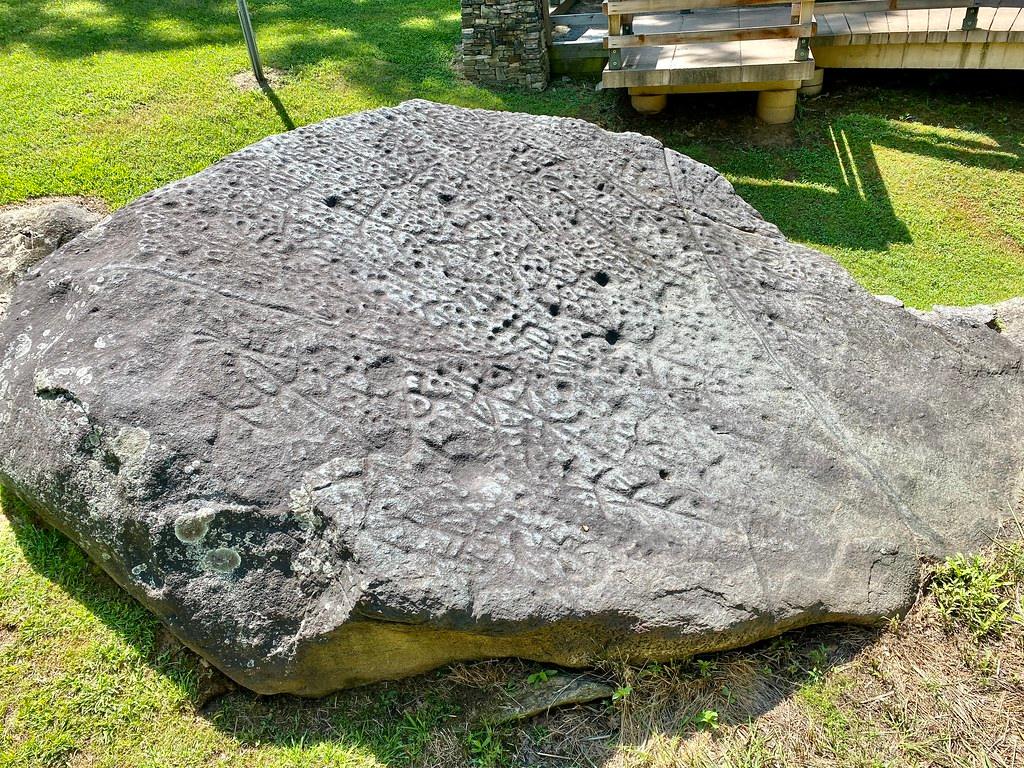
For years, the Cherokee people who lived near the soapstone boulder now known as Judaculla Rock used it as a sort of billboard, etching so many petroglyph designs into the North Carolina stone that even today it’s difficult to tell exactly how many there are. The boulder also sports seven grooves, the mythical footprints of a legendary giant, which contemporary archaeologists attribute to ancient masons mining the soapstone to make bowls.
Research has been slow; soapstone is naturally fragile, and the Cherokee also still see the rock as a sacred artifact. But the Cherokee are working with visitors and researchers to give them access while still preserving the stone. The countless petroglyphs covering this massive boulder remain largely undeciphered, holding secrets that may never be fully understood.
Conclusion
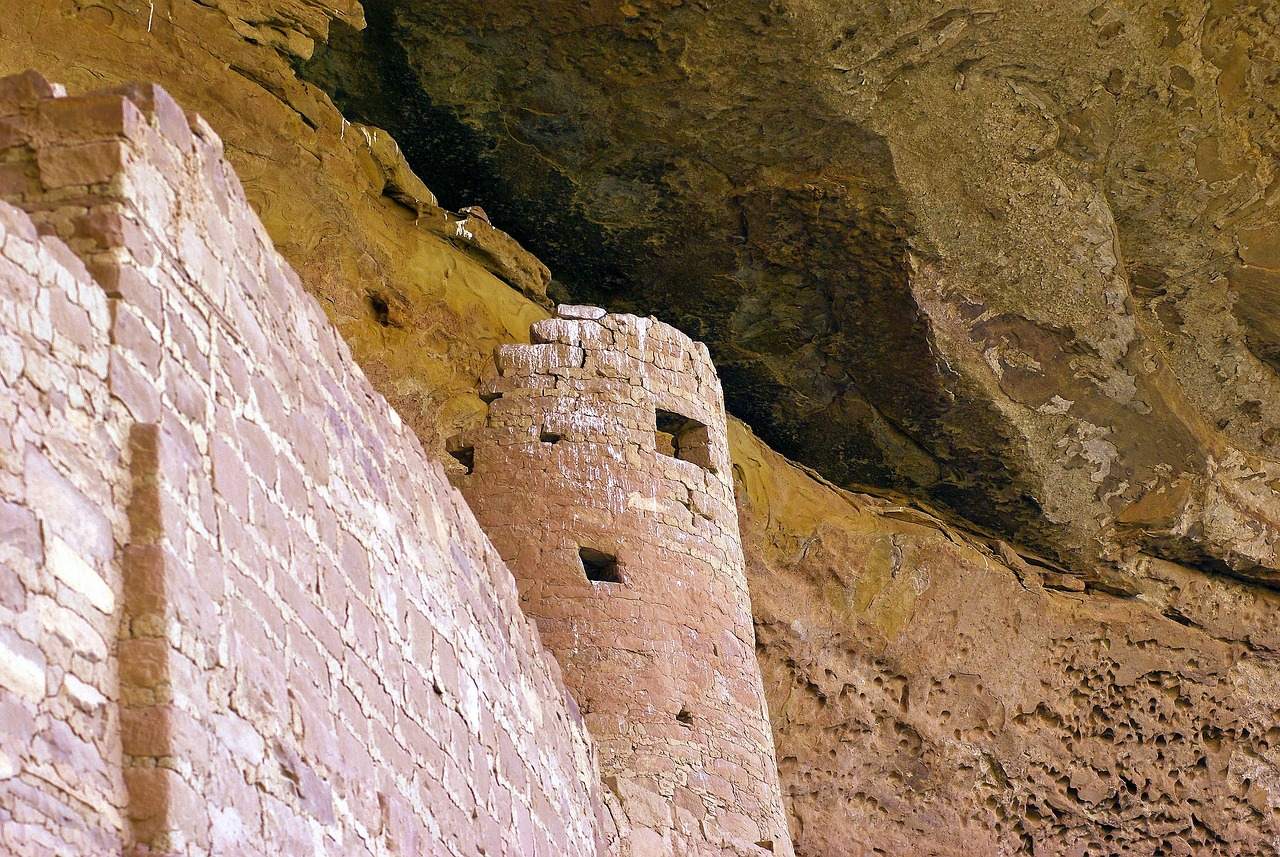
These seven ancient American mysteries remind us that our continent holds far more secrets than we’ve yet uncovered. From the vanished colonists of Roanoke to the massive earthworks of Cahokia, each mystery challenges our understanding of what ancient peoples could achieve. Modern technology continues to reveal new clues, yet the core questions remain tantalizingly out of reach.
Perhaps that’s what makes these mysteries so compelling. They force us to confront the limits of our knowledge and remind us that the past still has surprises waiting to be discovered. What do you think about these ancient enigmas? Did any of them challenge what you thought you knew about America’s earliest inhabitants?

Hi, I’m Andrew, and I come from India. Experienced content specialist with a passion for writing. My forte includes health and wellness, Travel, Animals, and Nature. A nature nomad, I am obsessed with mountains and love high-altitude trekking. I have been on several Himalayan treks in India including the Everest Base Camp in Nepal, a profound experience.




